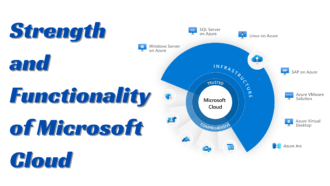How to Improve Your Office’s Network Performance
“First, make it right, then make it fast.”
You’re about to send some files to a client, but your office network doesn’t have it. Is there anything worse than having a slow network? To make matters worse, you can’t even load a simple web page.
A slow network can really affect your employees’ morale and overall productivity at the officOfficea result; people opt to purchase a higher bandwidth package. Be cautious; identifying the wrong problem is just as much a failure.
Keep reading to learn how to improve your OfficOffice’sork performance if you’re uncertain about what you should do.
How to Improve Your Office’s Network Performance
Give Your Guests a Different Network
Guests at your lobby could be draining your network performance. If you have a large number of guests using your network, it’ll be slow.
If you do network analysis, you’ll find that some tend to use heavy bandwidth applications. This may be through streaming videos, music, and even downloading heavy files. The best way is to create a guest login network.
Train Employees on Proper Usage
Research has shown that office networks are slowest during lunch breaks. During this time, employees are free, and some are streaming a movie; others are booting up a game. The overall result will take a toll on your network.
Educate them on responsible user behavior to save someone who’s using the network for work purposes some trouble.
Use of Virtual LAN
Virtual local area networks partition and isolate computer networks by grouping workstations. They keep network applications separate even though they are connected using the same cables.
VLANs can be segmented in a way that gives the most demanding traffic the highest priority.
Update Your Infrastructure
New technology has been doubling every year. This means that if you’re using systems that were updated a year ago, chances are, there are better versions available.
Updates solve network errors to make them compatible with the most recent infrastructure used in the market. Besides that, networks have shifted from cabled internet to fiber internet, which is cheaper and faster. If you haven’t switched, it’s high time you do so.
Monitor Your Network Performance
Optimizing a network involves tweaking and iterations according to observed behavior. Deploy a network management system that records your network’s performance in real-time.
Sevone solutions monitoring systems deliver real-time views of your system. They also enable you to see where and when performance is not optimal.
Do You Know That Your Network Performance Is Optimal?
Network Performance is measured in two ways: latency (delay) and bandwidth (throughput). Ensure that your network’s maximum transmission rate reaches the package you have paid for. For latency, check the delay before a data transfer begins following an instruction for its transfer.

















